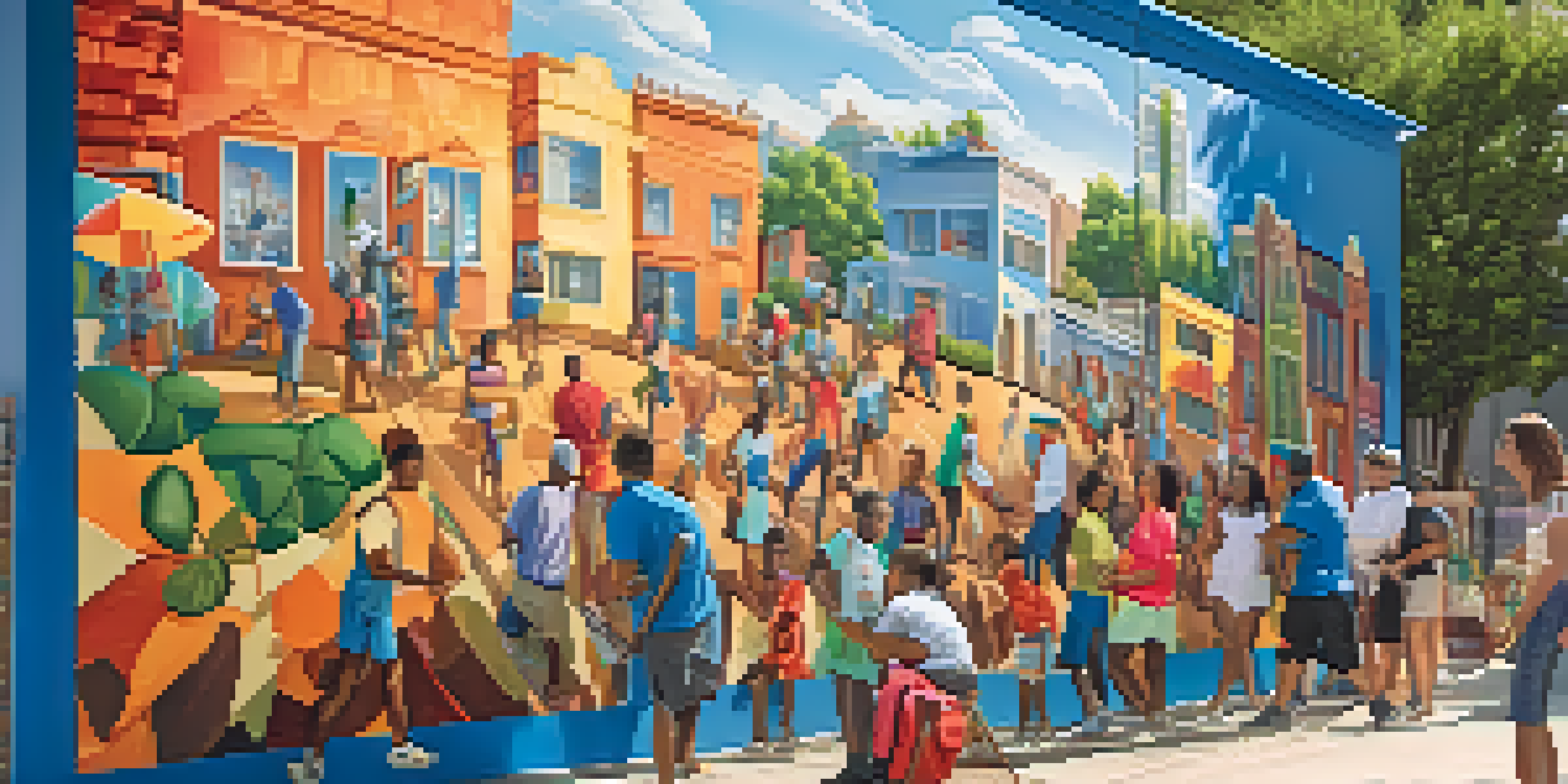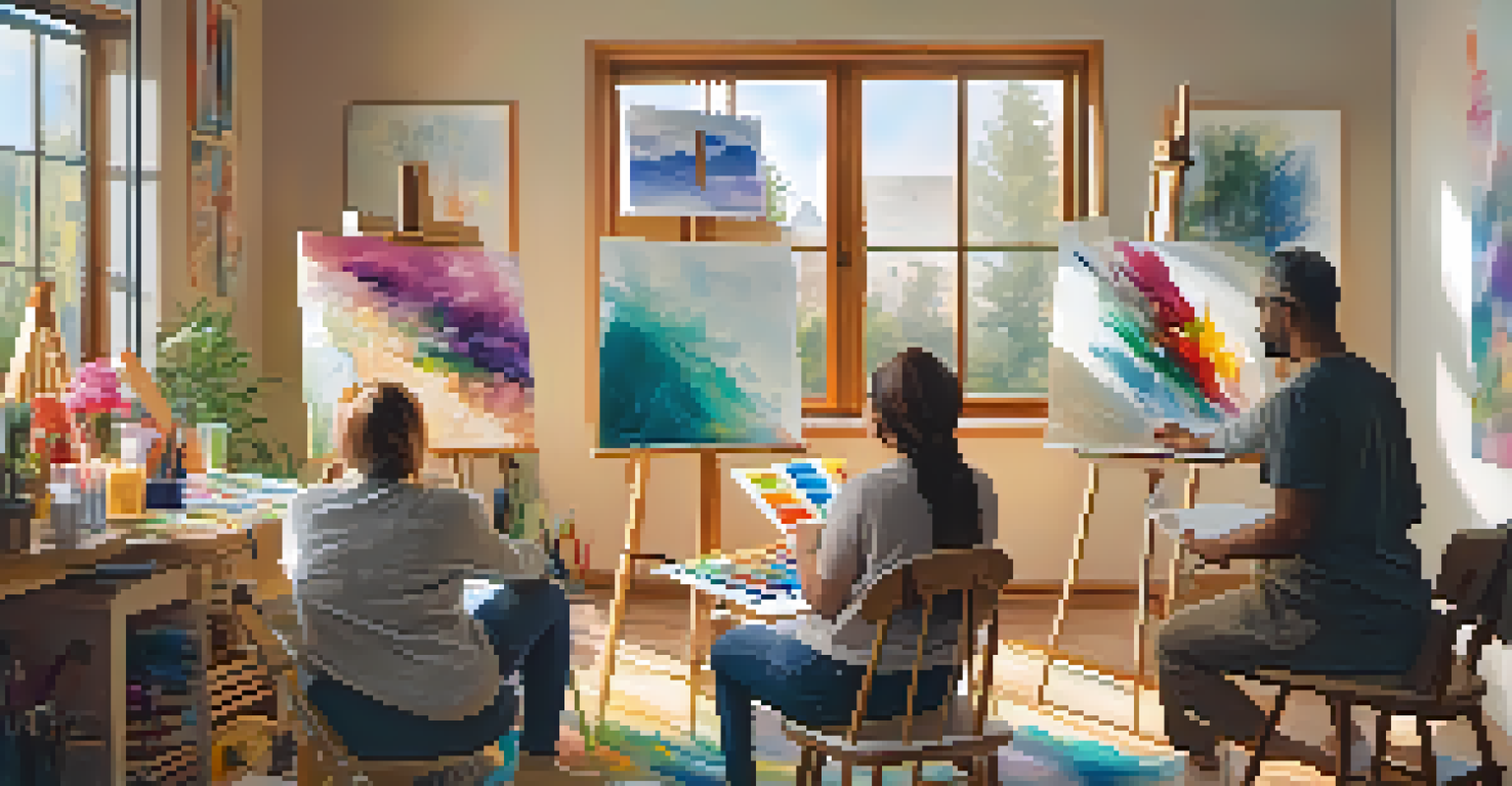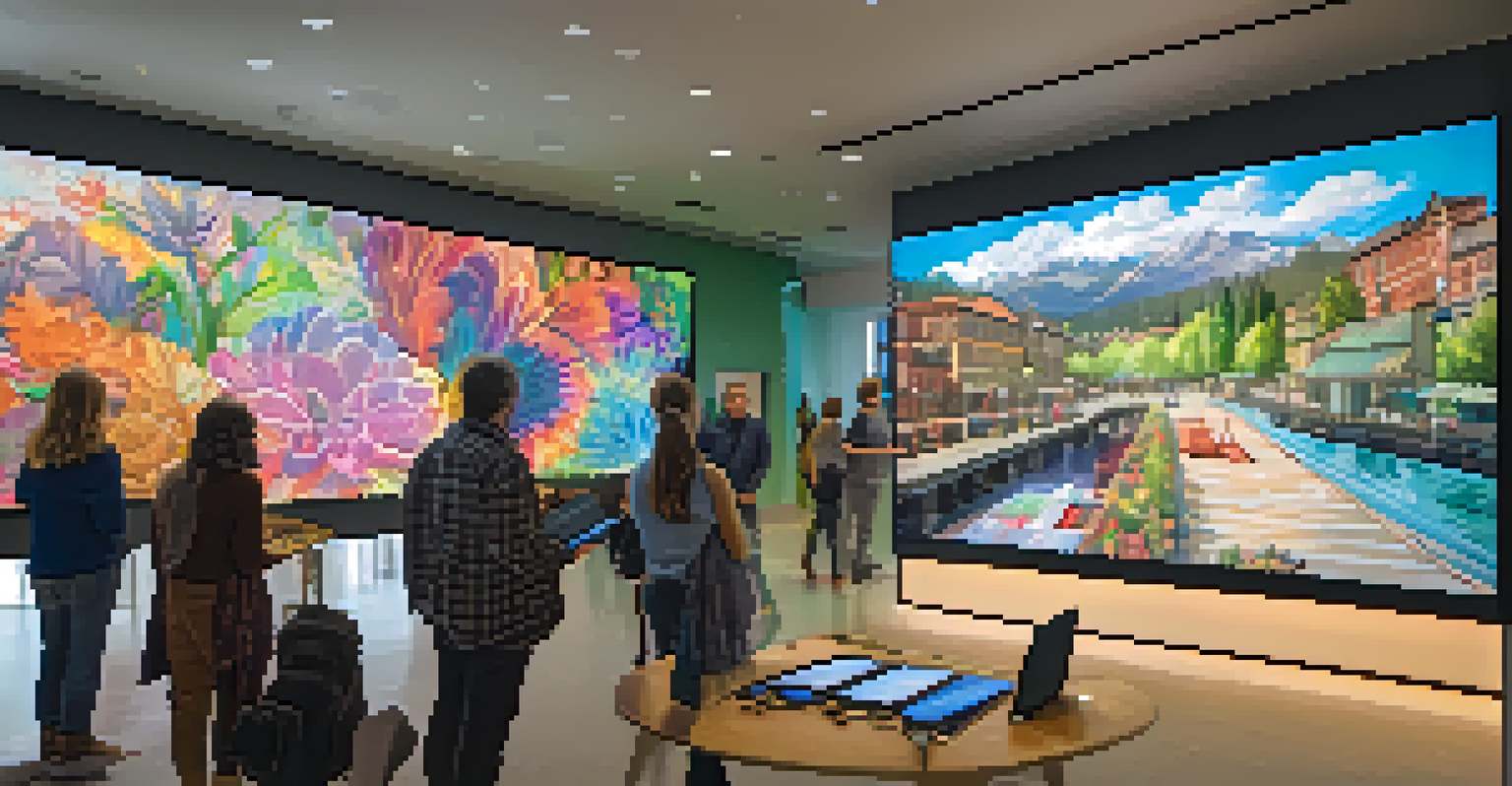Creative Expression: Art as a Tool for Healing Communities

Understanding Creative Expression and Its Impact
Creative expression is a way for individuals to communicate feelings, thoughts, and experiences without the constraints of language. Art can take many forms, including painting, music, dance, or writing, allowing diverse voices to emerge. When communities embrace creative expression, they create a safe space for individuals to explore their emotions and share their stories.
Art enables us to find ourselves and lose ourselves at the same time.
This process of sharing can promote understanding and empathy among community members. For instance, a mural depicting the history of a neighborhood can evoke pride and spark conversations about shared experiences. Ultimately, creative expression serves as a bridge, connecting people and fostering a sense of belonging.
Moreover, engaging in creative activities can have therapeutic benefits, providing an outlet for stress relief and emotional processing. In times of crisis, such as after a natural disaster or a community tragedy, art can play a crucial role in the healing journey.
Art as a Catalyst for Community Engagement
Art projects often bring people together, promoting collaboration and participation. Community art initiatives, such as mural projects or local theater productions, invite residents to contribute their skills and ideas. This collective effort not only beautifies the community but also strengthens social ties and fosters a sense of ownership.

When individuals collaborate on artistic endeavors, they build trust and develop friendships, which can have lasting positive effects. For example, a community garden where residents design and plant together can become a hub for social interaction and support. These shared experiences enhance community cohesion and resilience.
Art Fosters Community Connection
Creative expression through art helps build understanding and empathy within communities.
Additionally, art can serve as a platform for addressing social issues, encouraging dialogue on topics such as inequality or environmental concerns. By engaging in these discussions through art, communities can work together to find solutions and advocate for change.
Healing Through Storytelling and Narrative Art
Storytelling is a powerful form of creative expression that can facilitate healing. By sharing personal narratives, individuals can process trauma and find solace in knowing they are not alone. Community storytelling events, such as open mic nights or storytelling circles, allow people to connect through shared experiences.
The greatest art is to sit, wait and let it happen.
Narrative art, such as poetry or theater, can also illuminate the struggles and triumphs of a community. When stories are told through performance, they resonate deeply and can inspire empathy and understanding among audience members. This connection fosters a supportive environment where healing can begin.
Furthermore, documenting these narratives through various art forms can create a lasting legacy for future generations. This preservation of stories not only honors individual experiences but also strengthens community identity, reinforcing the idea that every voice matters.
Art Therapy: Professional Support for Healing
Art therapy combines the creative process with psychological support, providing individuals with a structured way to express themselves. Certified art therapists guide clients in using art to explore emotions, confront challenges, and promote personal growth. This form of therapy can be especially beneficial for those who find it difficult to articulate their feelings verbally.
In community settings, art therapy can address collective trauma and help groups navigate shared experiences. For instance, after a traumatic event, workshops led by art therapists can provide a safe space for participants to express their emotions through creative outlets. This process can be transformative, fostering healing and resilience.
Healing Through Storytelling
Sharing personal narratives can facilitate emotional healing and strengthen community bonds.
Moreover, art therapy can also enhance mental health awareness within communities, encouraging individuals to seek help when needed. By breaking down stigma surrounding mental health, communities can support one another in their healing journeys.
Creating Safe Spaces for Artistic Expression
To fully harness the healing power of art, it’s essential to create safe spaces where individuals feel comfortable expressing themselves. This can include community centers, galleries, or outdoor spaces designed for artistic activities. When people feel secure in their environment, they are more likely to engage in creative expression.
Safe spaces encourage exploration and experimentation without fear of judgment. This freedom allows individuals to connect with their inner selves and express their emotions authentically. For example, community art workshops that emphasize inclusivity can attract diverse participants, enriching the collective experience.
Furthermore, these spaces can serve as a refuge for those facing personal challenges. By providing opportunities for artistic engagement, communities can create an atmosphere of support and understanding, fostering healing and connection.
Collaborative Art Projects: Fostering Unity
Collaborative art projects bring community members together to create something beautiful and meaningful. These projects can range from large-scale murals to community gardens, offering opportunities for individuals to contribute their unique skills. As people work side by side, they develop relationships that transcend differences and foster unity.
For instance, creating a community mural can be a powerful experience, as participants share their perspectives and collaborate on a shared vision. This process not only enhances the physical space but also strengthens the bonds between individuals. When everyone plays a part in the creative process, they feel a sense of pride and ownership over the final product.
Digital Art for Modern Engagement
Online platforms enable innovative artistic expression and foster community connection during crises.
Moreover, collaborative art projects can highlight community values and aspirations. By collectively expressing their identity and dreams, communities can inspire one another and cultivate a shared sense of purpose.
The Role of Digital Art in Community Healing
In our increasingly digital world, online platforms offer new avenues for creative expression and community connection. Digital art, including graphic design, video, and social media campaigns, can engage wider audiences and amplify community voices. This modern form of artistic expression allows for innovative storytelling that can resonate deeply with viewers.
During times of crisis, digital art can serve as a powerful tool for raising awareness and mobilizing support. For example, social media campaigns featuring community art can highlight local issues and inspire action. By harnessing the reach of digital platforms, communities can unite in their efforts to create positive change.

Additionally, virtual art exhibitions and online workshops can provide opportunities for individuals to engage in creative activities from the comfort of their homes. This accessibility ensures that everyone, regardless of circumstances, can participate in the healing journey through art.